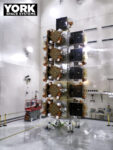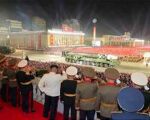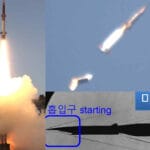RTX (formerly Raytheon Technologies) is developing a next-generation autonomous missile launcher under the U.S. Army’s DeepFires program. Designed for both long-range precision strike and air defense roles, the system integrates artificial intelligence (AI), modular payloads, and advanced command-and-control (C2) architecture to support multidomain operations.
DeepFires Program Overview
The DeepFires initiative is part of the U.S. Army’s modernization strategy to enhance long-range fires and integrated air and missile defense capabilities under Multi-Domain Operations (MDO). The program seeks to develop a mobile, AI-enabled launcher that can autonomously detect threats, select appropriate munitions from a mixed loadout, and engage targets across land and air domains.
According to RTX’s October 2025 announcement and supporting materials from the Association of the United States Army (AUSA) Annual Meeting & Exposition 2025 in Washington D.C., the prototype system is designed as a robotic platform capable of operating with minimal human intervention. The launcher is envisioned as an attritable asset—low-cost enough for deployment in contested environments where survivability may be limited.
Design Features: Modular Payloads and Autonomy
The DeepFires launcher is built around several key design principles:
- Modular Munition Pods: The system supports interchangeable pods that can carry different types of missiles—potentially including surface-to-surface precision strike missiles (like Precision Strike Missile / PrSM variants), surface-to-air interceptors (such as AIM-9X or AMRAAM derivatives), loitering munitions, or future hypersonic effectors.
- Autonomous Targeting: Using onboard sensors fused with external ISR feeds via tactical networks such as Link-16 or future Joint All-Domain Command & Control (JADC2) protocols, the system can autonomously identify threats within its engagement envelope.
- Crew-Optional Operation: While optionally manned for transport or oversight in permissive environments, DeepFires is designed to function fully autonomously during combat operations—including fire mission execution without direct operator input.
- Mobility: Though specific chassis details remain undisclosed publicly as of late 2025, RTX has indicated that it will be compatible with existing tactical vehicle platforms or future robotic ground vehicles under development by Army Futures Command.
C4ISR Integration and Tactical Role
A major innovation in DeepFires lies in its integration into broader C4ISR networks. The system is being designed for plug-and-play compatibility with existing fire control systems such as AFATDS (Advanced Field Artillery Tactical Data System), IBCS (Integrated Battle Command System), and emerging JADC2 frameworks.
This allows DeepFires units to act not only as shooters but also as distributed sensors within a kill web architecture—receiving targeting data from UAVs or satellites while simultaneously feeding back battle damage assessment or threat tracking data from their own sensors. This networked approach enhances survivability through dispersion while enabling massed fires without centralized control nodes vulnerable to disruption.
Munitions Flexibility: From Strike to SHORAD
The ability to carry mixed munition loads enables each DeepFires unit to serve multiple roles depending on mission requirements:
- Strike Missions: Equipped with long-range surface-to-surface missiles like PrSM Increment variants (~500+ km range), it can conduct deep fires against command posts, logistics hubs, or integrated air defense systems behind enemy lines.
- Tactical Air Defense: With short- or medium-range interceptors onboard—potentially leveraging existing stocks such as AIM-120D AMRAAMs integrated via ground launchers—it could provide point-defense against cruise missiles, drones (UAS), helicopters, or fixed-wing aircraft at brigade level or below.
- Loitering Munitions Deployment: Future configurations may include tube-launched loitering munitions for ISR-strike hybrid roles akin to Switchblade-class systems but deployed at scale from automated launchers.
Status of Development and Prototyping
The current status of the DeepFires program remains at early prototyping stage as of Q4 FY2025. RTX showcased concept renderings at AUSA 2025 but did not reveal a physical prototype yet. However, company officials confirmed that lab-based autonomy testing has begun using surrogate platforms equipped with simulated sensor suites and fire control logic modules.
The program appears aligned with parallel efforts under the U.S. Army’s Robotic Combat Vehicle-Medium/Heavy initiatives and could leverage shared autonomy stacks developed by entities like DARPA’s OFFSET program or DEVCOM Ground Vehicle Systems Center (GVSC). Field testing may begin by FY2027 if funding milestones are met under POM FY26–30 plans.
Strategic Implications for Future Force Design
If successful, DeepFires could transform how fires units are structured within Brigade Combat Teams (BCTs) or Theater Fires Commands by introducing highly mobile “fire-and-forget” launchers that reduce manpower requirements while increasing responsiveness across domains. Their low signature profile—enabled by passive sensors and minimal radio emissions during autonomous operation—could make them more survivable than traditional HIMARS/M270 units in contested electromagnetic environments.
This aligns closely with emerging doctrine emphasizing distributed lethality and resilient kill chains in Indo-Pacific scenarios where adversaries possess significant A2/AD capabilities. Moreover, pairing these launchers with airborne ISR assets like MQ-1C Gray Eagle ER or space-based sensors could enable rapid sensor-to-shooter loops measured in seconds rather than minutes—a critical edge in high-intensity peer conflict scenarios.









